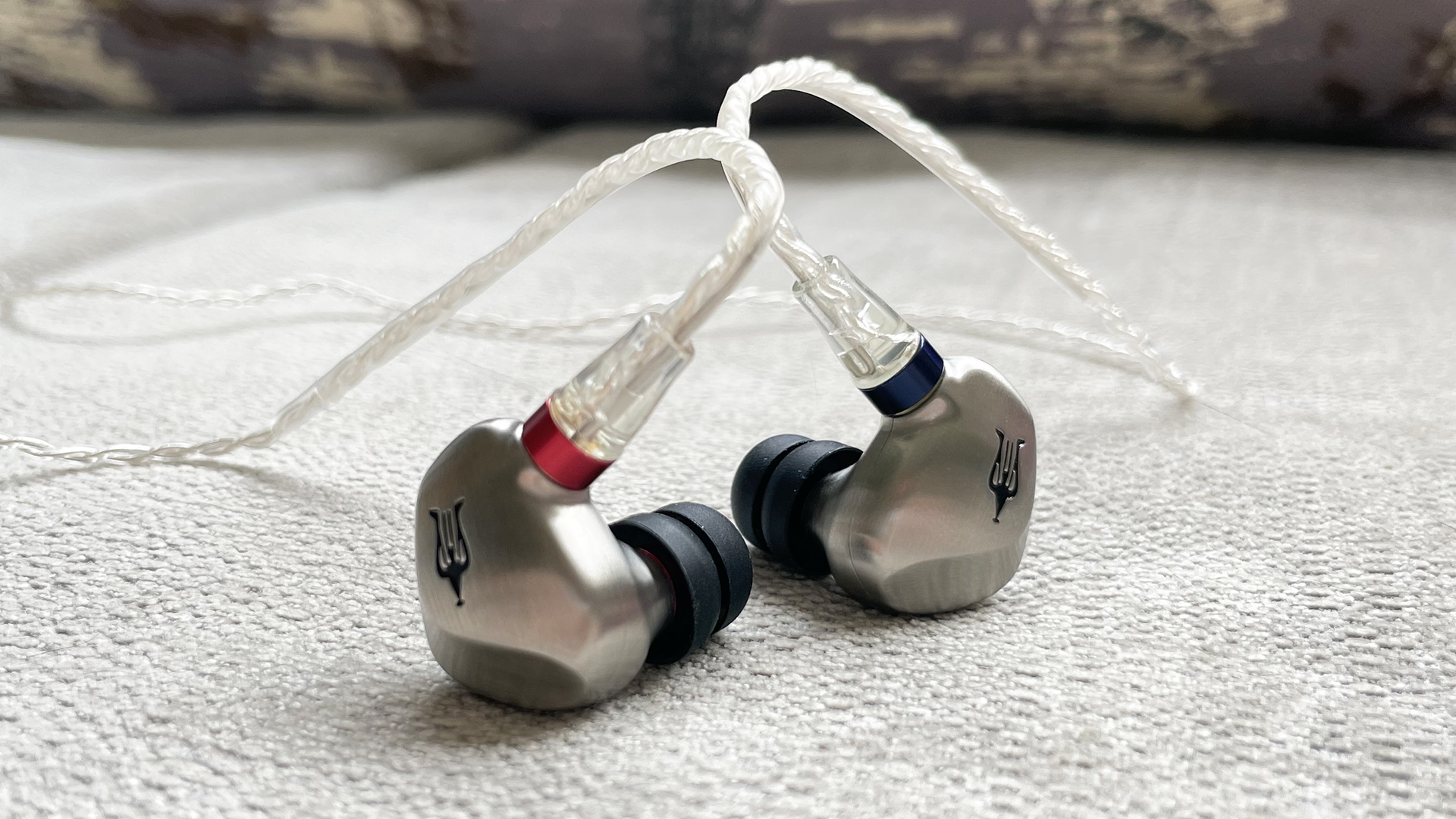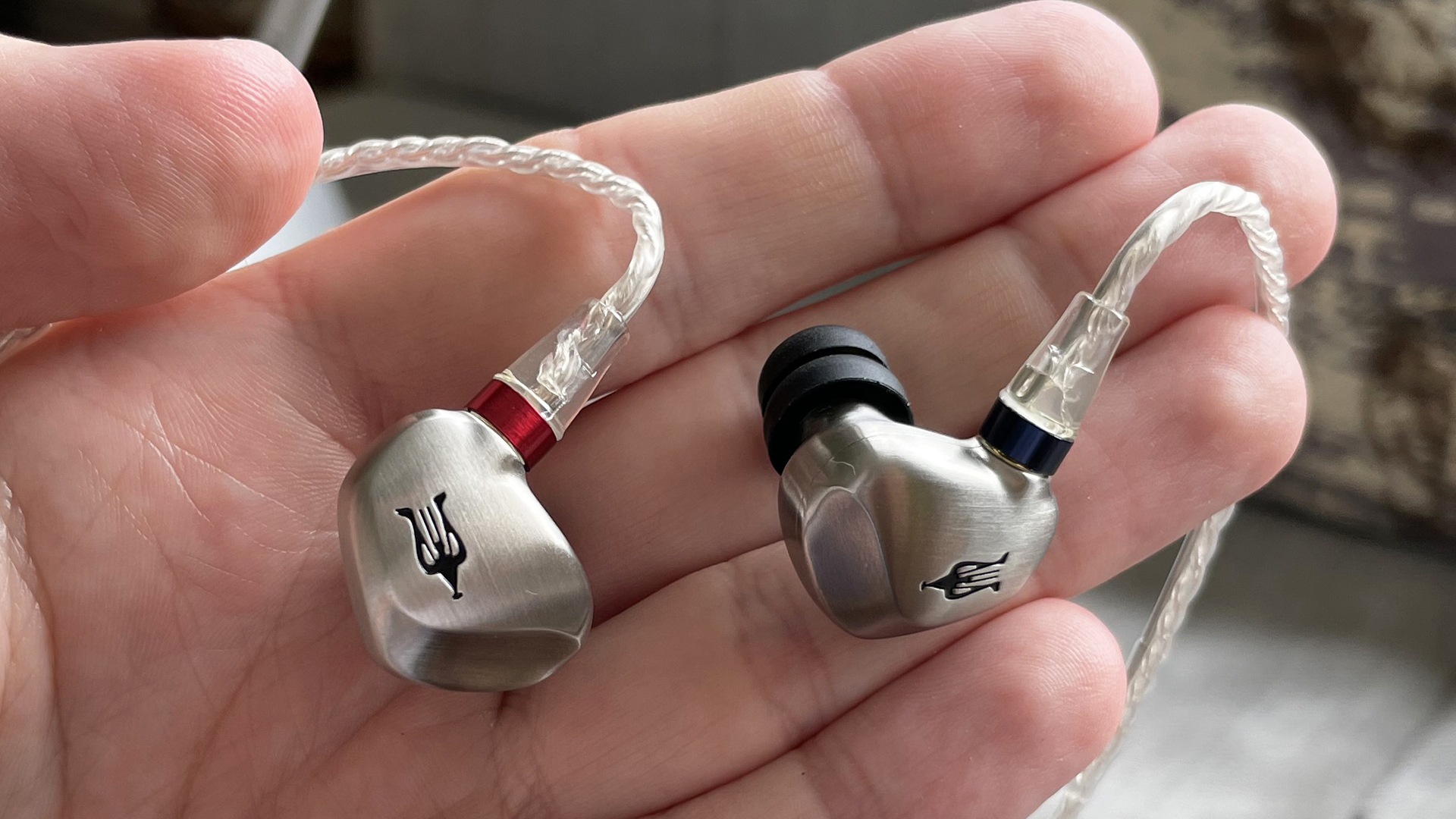Meze Audio Rai Solo review: in-ear wired headphones that are so fresh, so clean
The Meze Audio Rai Solo deliver incredible detail and dynamic range for a thoroughly reasonably price


The Meze Audio Rai Solo are wonderful-sounding headphones for the price. Their range and clarity is just fantastic, and it's easy to get a nice isolating fit. Audiophiles on the go will be extremely well-served.
-
+
Excellent wide soundstage
-
+
Incredibly precise and detailed
-
+
Solid fit and range of eartips
- +
-
-
No 1/4-inch adapter in box
-
-
Metal earbuds may be heavy for some
Why you can trust T3

What a great surprise the Meze Audio Rai Solo headphones are. At a glance, you might dismiss them as just another pair of in-ear monitors, but from the moment you try them, they’re an eye-opener.
They’ve earned a prime spot in our list of the best wired headphones thanks to their ability to match excellent definition and detail with some real dynamic range, and all at a thoroughly reasonable price for a pair of audiophile-aiming IEMs.
They’re like an affordable electric car – unassuming for the price, and yet when you ask for some performance, you REALLY get it.
The generally neutral sound means that if you’re looking for a pair of monitors for audio work, or you just want well-priced wired in-ear headphones to help bring the most out of hi-res music, you’ll struggle to find anything better for the money.
Meze Audio Rai Solo review: Price & release date
The Meze Audio Rai Solo headphones are officially £229/$199, though they seem to be regularly available for £179/$149, and a little over AU$400 in Australia.
They were originally released in late 2019, and though good wired headphones tend to hold onto their value much better than their wireless counterparts, the price drop we're seeing here absolutely adds to their excellent value.
This price has the Rai Solo competing with the likes of the Shure SE425 Pro or Sennheiser IE 300 – though, again, the lower real-world price we're seeing the Rai Solo for puts it significantly cheaper than these other models.
Get all the latest news, reviews, deals and buying guides on gorgeous tech, home and active products from the T3 experts

Meze Audio Rai Solo review: Features & design
The Rai Solo are notable for using a single large 9.2mm driver – for comparison, the Sennheiser IE 300 feature a 7mm unit, while the Shure SE425 Pro has a dual-driver design.
The Rai Solo also use a clever way of providing power to the driver, switching out cables leading across the membrane (which can apparently unbalance the vibrations) for a membrane material that's actually conductive itself, eliminating a source of imperfection.
This driver is housed in stainless steel enclosures that are, to put it simply, big ol' lumps of metal. Meze Audio says that it's used stainless steel because it's highly rigid, so interfering vibrations should be kept to a minimum. They certainly feel like quality pieces of solid engineering in the hand.
The headphones have a bit of heft to them, which is in stark contrast to the cable, which is notably light and flexible. The exception is by the earbuds, where it's been stiffened with a thicker metal cable to wrap around for over-the-ear loop.
Not everyone loves this kind of design, but given the weightiness of the earbuds, it seems like a good balance, and I certainly didn't find it uncomfortable.
The 1.3 cable has an L-shaped plug with 3.5mm connector at one, splits into two about two thirds of the way along, and has MMCX connectors at the other end.
In the box, you get 8 different eartip options of various sizes and depths, plus a carrying case. I had no problem finding one with a really isolating fit, and with the earloop cable, they were secure and blocked noise strongly.

Meze Audio Rai Solo review: Sound quality
With an impedance of 16 ohms and high sensitivity, you can certainly drive the Rai Solo from whatever you might need, though they're really designed to be through something with a bit more oomph, such as a DAC or to listen straight from a Hi-Res-focused music player.
I used them with the EarMen Sparrow and Cambridge Audio DacMagic 200M DACs mostly – though note that the Rai Solo don't come with a 1/4-inch adapter in the box, so you'll need to supply your own.
What's immediately clear with the Rai Solo is just how clean and clear they are across the whole range. The sharpness to a high hat, the tone of a voice, the thrum of a bass guitar note – everything is distinguished from everything else strongly, which then makes it easy to hear just how much detail is being drawn out.
It helps that there's lots of headroom for treble to push into, and great reserves of bass that can be drawn on when asked. That expansive soundstage means there's no danger of different parts of the songs getting crushed together – every element of the mix has room to stretch its legs.
You can hear the Rai Solo's really getting to push themselves if you switch between the Hi-Res version of a track and the basic version on a streaming service – they still offer plenty of separation in more basic listening and make the most of what's available to them, but when you add in the extra song information, you can hear the top and bottom expanding immediately.
They're made to be distortion free and to offer a nicely neutral presentation compared to your average wireless earbuds, and can treat delicate acoustic tracks with a deft touch, but when the piano gets heavy or a choir comes in, they can add depth and resonance instantly.
Move to something more poppy, and the dynamic range means they have plenty of attack and energy – to misquote Al Pacino in Heat, "drop of a hat, the Rai Solo will rock and roll".
Going for a fairly neutral presentation doesn't hold back in pop and rock when you're able to product this much bass thump suddenly, and yet keep mid-range clear and treble lofty and sharp while doing it. At times, I was surprised that a single-driver unit at this price could manage the shift of sounds I was getting in a single song. There's total control of the vehicle, no matter how fast or how brutally the Rai Solo are being asked to drive it.
And then you switch back from your hardcore drum n bass to something classical and all that grunt disappears back in the pocket, replaced with gentle refinement. This is Daniel Craig's James Bond in headphone form, switching from prim casino guest to muscly fighter the moment your back is turned, and then back before you know what's going on.
They also do all this while feeling suitably open, and not like the sound is coming from a firmly sealed earbud.
Meze Audio Rai Solo review: Verdict
It should be clear by now how enamoured I am with the Meze Audio Rai Solo. Paired with a decent DAC, they're just so enjoyable and layered, though even just straight out of a computer/phone/Nintendo Switch/whatever, the quality is just fantastic.
If you want something for high-quality music listening on the go, and you want it for under £200/$200, I cannot recommend the Rai Solo enough. Or if you want some reasonably priced audiophile headphones for the home that can block the outside din when them you need them do.

Matt is T3's former AV and Smart Home Editor (UK), master of all things audiovisual, overseeing our TV, speakers and headphones coverage. He also covered smart home products and large appliances, as well as our toys and games articles. He's can explain both what Dolby Vision IQ is and why the Lego you're building doesn't fit together the way the instructions say, so is truly invaluable. Matt has worked for tech publications for over 10 years, in print and online, including running T3's print magazine and launching its most recent redesign. He's also contributed to a huge number of tech and gaming titles over the years. Say hello if you see him roaming the halls at CES, IFA or Toy Fair. Matt now works for our sister title TechRadar.